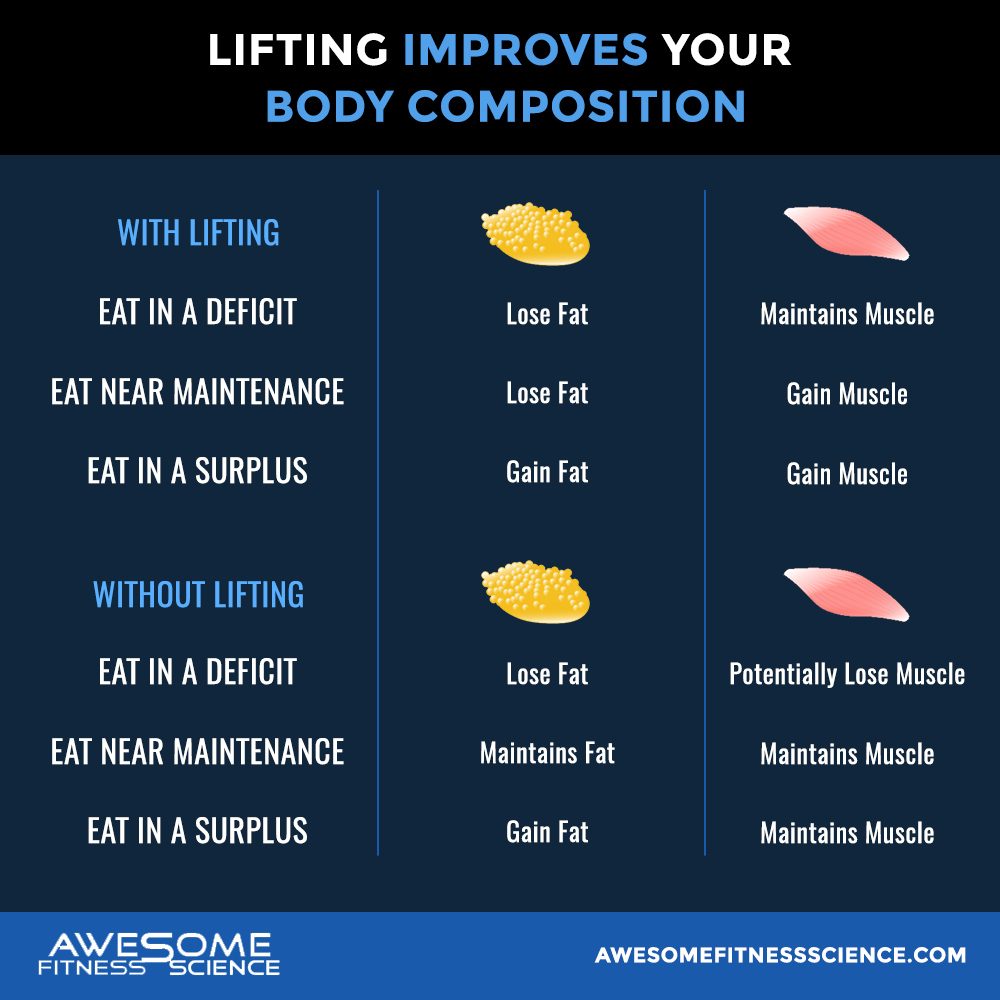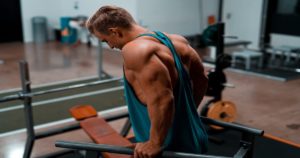
The Best Lifting Tempo For Hypertrophy
Understanding tempo is like understanding females, guys think they know what they’re doing, but they don’t. For those that don’t know, tempo is how fast you lift and lower your reps.

Hey ladies, you are an amazing creature. You are generally smarter, more attentive, and better groomed than us testosterone filled men.
You have so much going for you, but if I’m being honest, many of you avoid lifting weights to your detriment. You opt for hours of yoga, spin classes, circuit training, and endless cardio while wondering why you don’t have anything close to your dream body.
You want athletic thighs with specific lines of muscle definition. You want glutes thicker than the top celebrities you gossip about. You also want toned arms and defined shoulders without being mistaken for a bodybuilder.
Yeah, I know that’s exactly what you want because I’ve worked with tons of women of all different ages.
Here’s the thing though. If that’s what you want, strength training is the critical puzzle piece missing in your life. I’m talking real strength training because most people don’t know what real serious strength training is.
It’s not those endless group classes with pink dumbbells, dorky yoga balls, and booty bands.
Serious strength training is lifting heavy weights or doing hard resistance exercise in a variety of rep ranges while getting stronger. This requires longer rest periods and pushing your muscles to it’s limits. The kind of limits that God forbid, causes you to grunt occasionally.
Week after week, you should push your performance further and further until the weights you use get bigger and bigger. Weights that once seemed impossible should eventually be your warm up. If this isn’t happening, then you’re not truly strength training.
And until you do real strength training, your dream body will elude you for a lifetime, no matter how good your diet is, no matter how much you sweat, and no matter how committed you feel.
I sound harsh, but trust me, I’m here to help. Read further my friend.
I use the word toned in the title because that’s the word women resonate with most. I don’t blame you.
But here’s the thing. Toned isn’t a real thing. It’s a fairytale that you think means something, but actually means something else. For you, toning means shaping, defining, or sculpting.
Unfortunately, muscles don’t tone, shape, define, or sculpt. There’s nothing within their physiology that does that. Muscle is simply lean tissue that does 2 things as far as its appearance. Muscle tissue grows or shrinks. That’s it.
Believe it or not, when you say “I want toned muscles,” you actually mean, “I want big muscles” or “I want to get muscular.”
That sounds masculine, but you only think that because the culture has stigmatize bigger muscles as exclusive to men or bodybuilding she-hulks. Actual physiology doesn’t care though. Muscle is merely a slab of meat on your bones. It’s neither more masculine or feminine.
Fortunately, your muscles already have the “toned” shape you want. There’s no toning program to shape your muscles further. You simply need to grow the muscle to make it’s shape noticeable. In other words, the curves you crave are already there. They’re simply too small because you’ve been terrified of touching weights your whole life.
Furthermore, for these curves to get the lines and definition you want, you need to lose the body fat covering it via dieting.
Regardless, lifting weights is critical whether you’re dieting or not. In fact, dieting without lifting will simply make you smaller and flatter, not more defined or sculpted.

However, the underlying fear with intense strength training is getting too bulky. I get it. You’re concerned about getting mistaken for a bodybuilder just like I’m concerned about being mistaken for Shaquille O’Neal.
All sarcasm aside, your fear of getting too bulky is irrational. Here’s a long list of why you should lift heavy weights while never getting bulky doing so.
Testosterone is an anabolic hormone that influences your base level of muscle (1). In men, more testosterone means you carry more muscle mass and have a slight ability to grow muscle faster (2,3).
This is true for women as well, but the effects are extremely watered down because women naturally have over 10 times less testosterone (4,5). Female physiology doesn’t come with much inherent muscle. You have to actually build it my friend.
Without growing muscle, your shape and curves are non-existent.
Testosterone also declines in both genders as they age, so the longer you wait to lift, the more physiology stacks the deck against you (6,7).
This brings me to my next point. You should start lifting as soon as possible because muscle growth is dreadfully slow. Most women know the struggle of losing fat. Losing fat feels like an eternity as the scale takes forever to drop, but building muscle is physiologically even slower.
You’re simply not going to get 20 lb Thor traps by touching a barbell just like I’m not going to get the voice of Katy Perry from singing a few tunes in my car.
In fact, there are plenty of testosterone men who desperately want to look bulky, but can’t no matter how intentional they are.
So your female muscle tissue will simply never expand to the point of, “Holy snaps, my biceps are bigger than my boyfriend’s head!”
The women you do see that have “manly” bodies have dedicated their lives to skyrocketing muscle growth. This usually involves all the sauces and by sauces, I’m talking a myriad of steroids.
If you don’t take steroids on top of having freak genetics, you’ll be fine. You could lift as much as you want without any chance of getting bulky.
There’s this misconception that lifting heavy makes you big and lifting light makes you toned.
Research shows a trend in the opposite direction actually. Female rep range research finds low load/higher rep training may grow more muscle than high load/lower rep training when matched for effort (10,11,12).
Even in these studies where researchers are coaching women to push their sets to failure, we’re seeing reasonable muscle growth in all rep ranges. Nothing astronomical.
In other words, don’t fear any type of load especially heavy ones.
In addition to not fearing heavy weights, make sure you don’t fear any piece of equipment either.
For example, some women think bands are for toning while barbells are for bulking. That’s not how it works.
Bands simply stretch and change the level of the resistance at various points while a barbell’s resistance remains constant. The barbell also allows you to practically load more weight.
They have different applications but your muscles don’t care what it’s using. It needs to lift harder and heavier over time to grow regardless of the equipment.
Lifting causes your body to breakdown stored sugar and fat while stimulating muscle growth (which you desperately need). Strength training inherently getting leaner not bulkier. In fact, the stronger you get, the more fat you breakdown (14).
What happens to your body composition long term (muscle to fat ratio) while strength training depends on the degree you’re feeding it.
Regardless, all of these energy balance equations will always be worse without lifting.

Without that muscle growth being stimulated from serious strength training, any calories that would’ve been stored in it’s place becomes fat instead (13).
Muscle is also denser, takes up less room and always looks better than fat tissue.
Sometimes, women describe their toned look as long and lengthy muscles. They resort to yoga, pilates, or weird sideways walking on the stairmaster.
Physiologically, intense strength training is the only thing that can lengthen your muscles (8,9). Your muscle fibers grow in length which reveals their shape more. To be clear, this doesn’t mean you can change your insertion points. Where your muscles insert is given genetically by birth.
But you can rest assure that as your muscles grow in length and width from lifting, you’ll look more “toned” and appear leaner. I’ve never had a female client complain that she has too much muscle. Stop the lifting-phobia my friend.
Strength training is not exclusive to men. Women can and should lift. That toned, curvy, sculpted, or whatever the latest buzzword to describe your desired look comes from lifting weights with some serious intensity.
So start lifting and don’t be afraid to grunt as loud as you need. The gym is as much your playground as it is mine. It’s about time you ladies get after the muscle growth you didn’t know you always wanted.
1.
JP;, Mouser. “The Association between Physiologic
Testosterone Levels, Lean Mass, and Fat Mass in a Nationally Representative
Sample of Men in the United States.” Steroids, U.S. National Library of
Medicine, pubmed.ncbi.nlm.nih.gov/27543675/.
2.
Bhasin, Shalender, et al. “Testosterone Dose-Response
Relationships in Healthy Young Men.” American Journal of
Physiology-Endocrinology and Metabolism, 1 Dec. 2001, journals.physiology.org/doi/full/10.1152/ajpendo.2001.281.6.e1172.
3.
Mouser, J. Grant, et al. “The Association between
Physiologic Testosterone Levels, Lean Mass, and Fat Mass in a Nationally
Representative Sample of Men in the United States.” Steroids, Elsevier,
17 Aug. 2016, www.sciencedirect.com/science/article/abs/pii/S0039128X16301052.
4.
He, Zihong, et al. “Plasma Steroids, Body Composition,
and Fat Distribution: Effects of Age, Sex, and Exercise Training.” Nature
News, Nature Publishing Group, 5 Mar. 2018, www.nature.com/articles/s41366-018-0033-1.
5.
Sowers, MF., et al. “Testosterone Concentrations in
Women Aged 25–50 Years: Associations with Lifestyle, Body Composition, and
Ovarian Status.” OUP Academic, Oxford University Press, 1 Feb. 2001,
academic.oup.com/aje/article/153/3/256/80402.
6.
JB;, Mohr. “Normal, Bound and Nonbound Testosterone
Levels in Normally Ageing Men: Results from the Massachusetts Male Ageing
Study.” Clinical Endocrinology, U.S. National Library of Medicine,
pubmed.ncbi.nlm.nih.gov/15638872/.
7.
Haring . “Age-Specific Reference Ranges for Serum
Testosterone and Androstenedione Concentrations in Women Measured by Liquid
Chromatography-Tandem Mass Spectrometry.” The Journal of Clinical
Endocrinology and Metabolism, U.S. National Library of Medicine, pubmed.ncbi.nlm.nih.gov/22162468/.
8.
Simpson . “Stretch Training Induces Unequal Adaptation
in Muscle Fascicles and Thickness in Medial and Lateral Gastrocnemii.” Scandinavian
Journal of Medicine & Science in Sports, U.S. National Library of
Medicine, pubmed.ncbi.nlm.nih.gov/28138986/.
9.
Aquino . “Stretching versus Strength Training in
Lengthened Position in Subjects with Tight Hamstring Muscles: a Randomized
Controlled Trial.” Manual Therapy, U.S. National Library of Medicine,
pubmed.ncbi.nlm.nih.gov/19632878/.
10. Cholewa
. “The Effects of Moderate- Versus High-Load Resistance Training on Muscle
Growth, Body Composition, and Performance in Collegiate Women.” Journal of
Strength and Conditioning Research, U.S. National Library of Medicine,
pubmed.ncbi.nlm.nih.gov/28699923/.
11. “Comparing
the Effects of Low and High Load Resistance Exercise to Failure on Adaptive
Responses to Resistance Exercise in Young Women.” Taylor & Francis,
www.tandfonline.com/doi/abs/10.1080/02640414.2018.1559536?journalCode=rjsp20.
12. Dinyer
. “Low-Load vs. High-Load Resistance Training to Failure on One Repetition
Maximum Strength and Body Composition in Untrained Women.” Journal of
Strength and Conditioning Research, U.S. National Library of Medicine,
pubmed.ncbi.nlm.nih.gov/31136545/.
13. Miller
. “Resistance Training Combined With Diet Decreases Body Fat While Preserving
Lean Mass Independent of Resting Metabolic Rate: A Randomized Trial.” International
Journal of Sport Nutrition and Exercise Metabolism, U.S. National Library
of Medicine, pubmed.ncbi.nlm.nih.gov/28871849/.
14. Vechetti. “Mechanical Overload-Induced Muscle-Derived Extracellular Vesicles Promote Adipose Tissue Lipolysis.” FASEB Journal : Official Publication of the Federation of American Societies for Experimental Biology, U.S. National Library of Medicine, pubmed.ncbi.nlm.nih.gov/34033143/.
Sign up for AwesomeFitnessScience Weekly. You’ll get juicy insider secrets, updates, and stories.

Understanding tempo is like understanding females, guys think they know what they’re doing, but they don’t. For those that don’t know, tempo is how fast you lift and lower your reps.

The Training Frequency Guide You Wished You Read Earlier High frequency training is catching popularity quickly, but many old school bros and their diehard fans

Red meat has been the blame for bad health for decades now. Apparently, eating a mammal’s nutrient dense flesh is going to infect your body, give you cancer, and put you in a grave before you can meet your grandchildren.